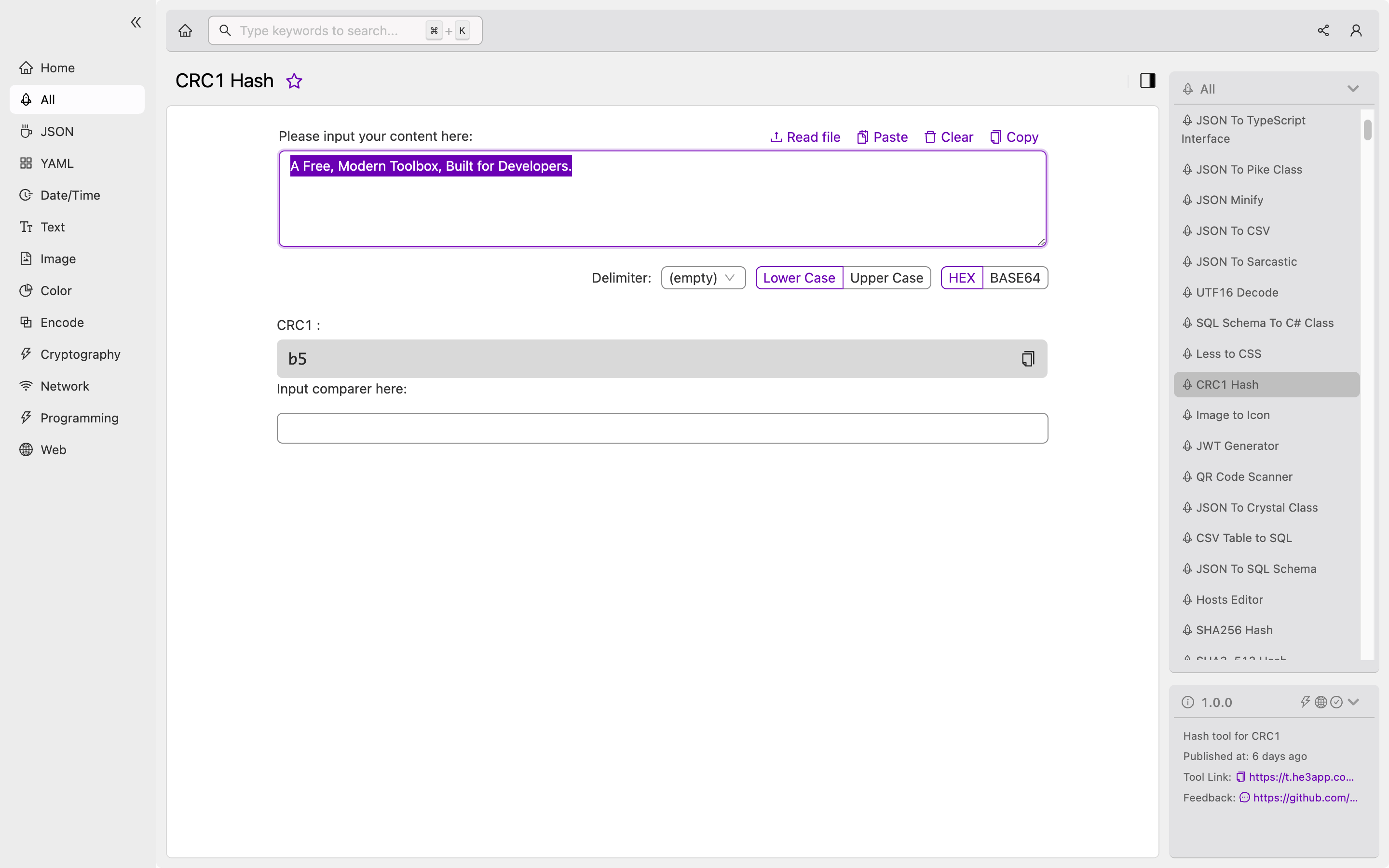Introduction
Hashing algorithms are essential in data integrity and security, allowing developers to detect any inconsistencies or modifications in their data. One of the most common hashing algorithms used by developers is CRC1 Hash. This article will dive deep into what CRC1 Hash is, its features, scenarios for developers, misconceptions, and frequently asked questions.
What is CRC1 Hash?
CRC1 Hash is a hashing algorithm that generates a checksum from a given message or data, used primarily for error detection in data transmission. The algorithm uses a polynomial function on the input data to obtain a unique fixed-length output that represents the data in checksum form.
CRC1 Hash is a variant of the cyclic redundancy check (CRC) algorithm, which is a type of checksum that detects errors in digital data. This algorithm is known for its efficiency in computing the checksum, making it a popular choice for data transmission and storage.
How CRC1 Hash Works
CRC1 Hash works by dividing the message data into blocks and performing bitwise operations on each block to generate the checksum. These bitwise operations are a combination of XOR and arithmetic operations, with the specific functions determined by the polynomial function used.
The polynomial value used in CRC1 Hash is 0x11021, which is a 16-bit binary value represented in hexadecimal. This value is known as the generator polynomial and defines the characteristic of the checksum. The process of obtaining the CRC1 Hash is done in four main steps:
- Initialize the checksum value to 0xFFFF.
- Parse the message data into blocks.
- Perform the bitwise operations on each block to obtain intermediate CRC values.
- The final CRC1 Hash value is the bitwise complement of the intermediate values obtained.
Sample Code or Commands
Here’s an example of how to calculate the CRC1 Hash using Python:
from crccheck.crc import Crc16
# Initialize the checksum value to 0xFFFF.
crc = Crc16(0x11021, initvalue=0xFFFF)
# Parse the message data into blocks and calculate the checksum.
data = b"Hello, World!"
checksum = crc.process(data)
print(hex(checksum))
# Output: 0x38cbOr you can use CRC1 Hash tool in He3 Toolbox (https://t.he3app.com?3nxn) easily.

Scenarios for Developers
CRC1 Hash is useful for developers in scenarios where data integrity is essential. This includes:
- Data transmission over unreliable channels, such as radio signals or serial communication.
- Storing data in non-volatile memory, such as hard drives or flash memory.
- Protecting against accidental data corruption.
Key Features
Here are some key features of CRC1 Hash:
| Feature | Description |
|---|---|
| Efficiency | CRC1 Hash is highly efficient in computing the checksum, making it ideal for real-time applications. |
| Universality | The same CRC1 Hash algorithm can be used for all message lengths and data types. |
| Error detection | Detection of single-bit errors, burst errors, and random errors in the data. |
Misconceptions about CRC1 Hash
One common misconception about CRC1 Hash is that it provides encryption or data security. This is not true, as CRC1 Hash is a checksum algorithm used for error detection, and not encryption. It does not protect the data from unauthorized access, nor does it provide confidentiality.
Frequently Asked Questions
Is CRC1 Hash suitable for long messages?
Yes, CRC1 Hash is suitable for long messages, as the same algorithm can be used for all message lengths, and the checksum value is fixed-length.
Can CRC1 Hash detect all types of errors in data?
No, CRC1 Hash is not capable of detecting all types of errors in data. It is most effective at detecting single-bit errors, burst errors, and random errors. However, it may not be able to detect errors that occur in specific patterns or combinations.
Conclusion
CRC1 Hash is a highly efficient algorithm for generating checksums that can detect errors in digital data. Its universal use and error detection capabilities make it an excellent choice for developers who require data integrity in their applications. By understanding how CRC1 Hash works, its features, and scenarios for developers, you can make informed decisions on its suitability for your projects.
References:
